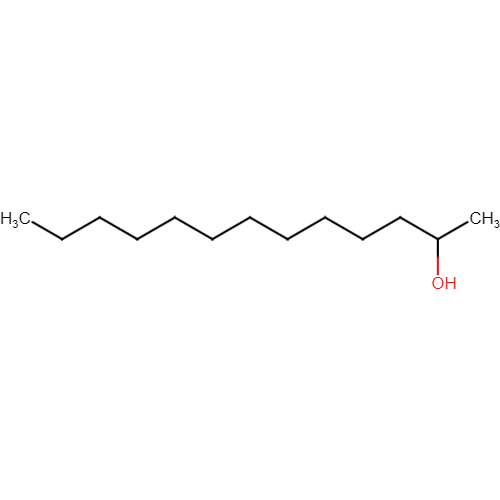2-tridecanol
| Compound Structure: |

|
||||||||||||||||||||||||||||||||||||||||
|---|---|---|---|---|---|---|---|---|---|---|---|---|---|---|---|---|---|---|---|---|---|---|---|---|---|---|---|---|---|---|---|---|---|---|---|---|---|---|---|---|---|
| Synonyms: | 2-TRIDECANOL;Tridecan-2-ol;2-Tridecyl Alcohol;2-Hydroxytridecane;Methylundecylcarbinol;Methyl undecyl carbinol;1-methyldodecanol;EINECS 216-723-1;EINECS 268-011-5;1-methyl-1-dodecanol;1-methyldodecyl alcohol; | ||||||||||||||||||||||||||||||||||||||||
| Compound ID: | NMPC-290 | ||||||||||||||||||||||||||||||||||||||||
| PubChem ID: | |||||||||||||||||||||||||||||||||||||||||
| Molecular Formula: | C13H28O | ||||||||||||||||||||||||||||||||||||||||
| Canonical SMILES: | CCCCCCCCCCCC(C)O | ||||||||||||||||||||||||||||||||||||||||
| InChIKey: | HKOLRKVMHVYNGG-UHFFFAOYSA-N | ||||||||||||||||||||||||||||||||||||||||
| About the compound: | Tridecan-2-ol, also known as 2-tridecanol, is a secondary alcohol. It is tridecane substituted by a hydroxy group at position 2. This compound plays a role as an insect attractant, a pheromone, and a plant metabolite. It is naturally found in various organisms, including Zingiber mioga, Cistus creticus, and Carica papaya. GHS Hazard Statements • H220 (10.91%): Extremely flammable gas [Danger Flammable gases] • H315 (33.33%): Causes skin irritation [Warning Skin corrosion/irritation] • H318 (52.73%): Causes serious eye damage [Danger Serious eye damage/eye irritation] • H410 (33.33%): Very toxic to aquatic life with long lasting effects [Warning Hazardous to the aquatic environment, long-term hazard] |
||||||||||||||||||||||||||||||||||||||||
| Properties: |
Chemical
and Physical Properties
Source: PubChem |
||||||||||||||||||||||||||||||||||||||||
| Source Species: |
Tecoma stans |